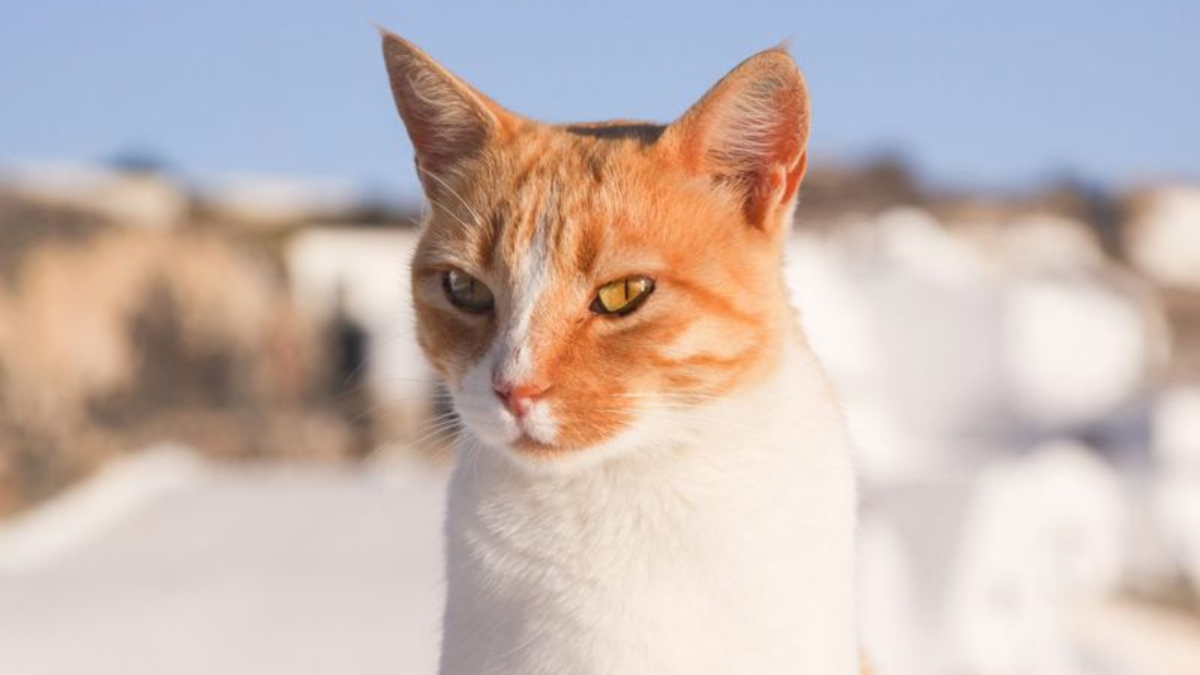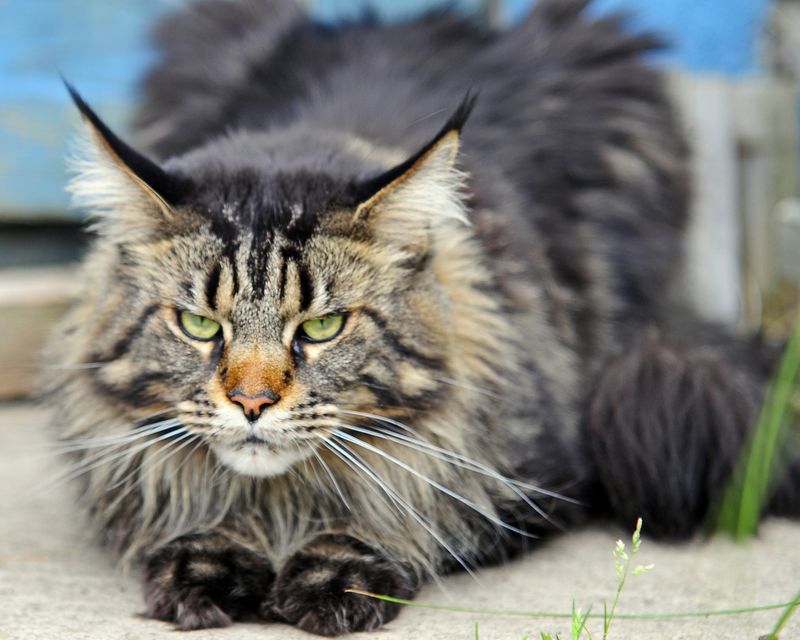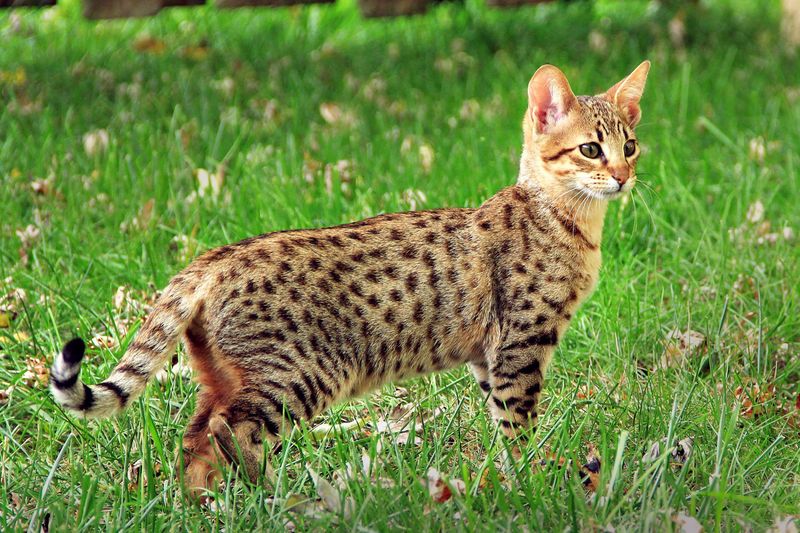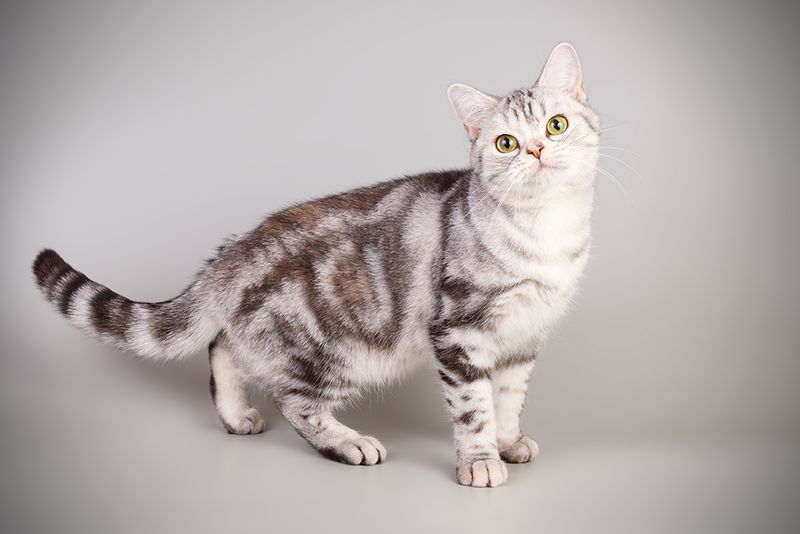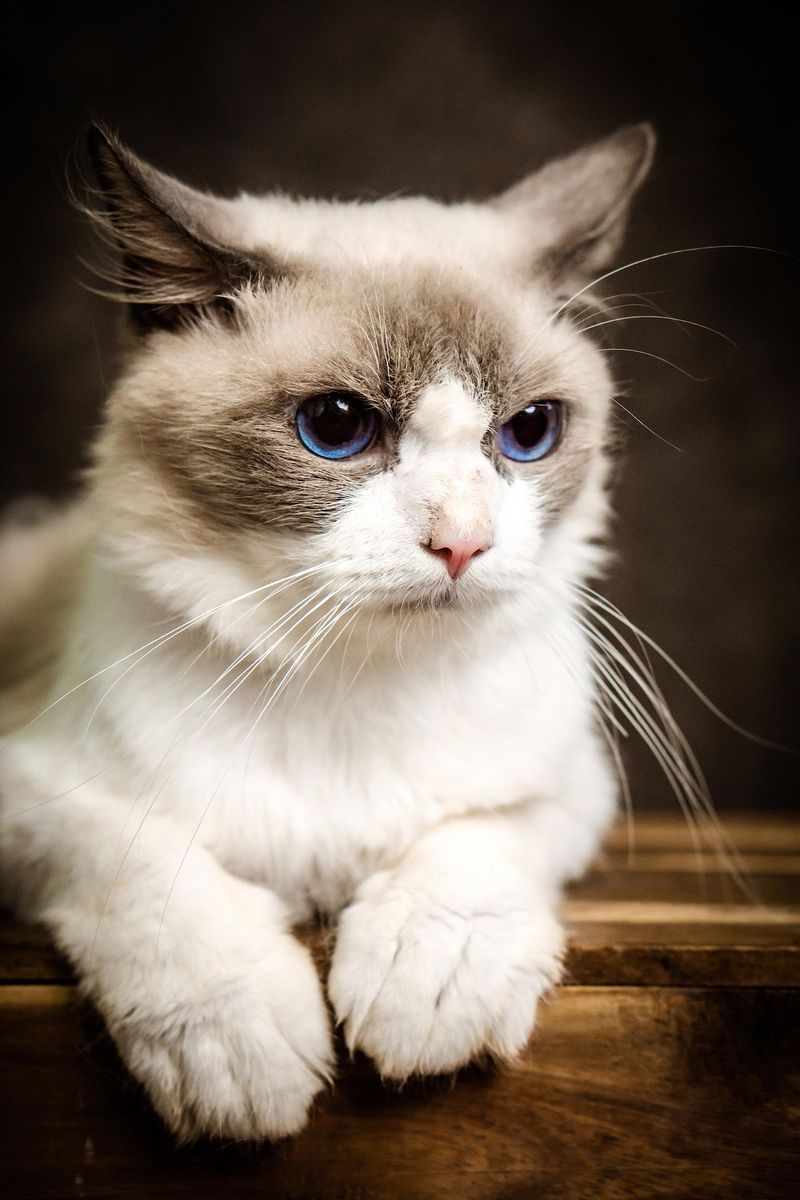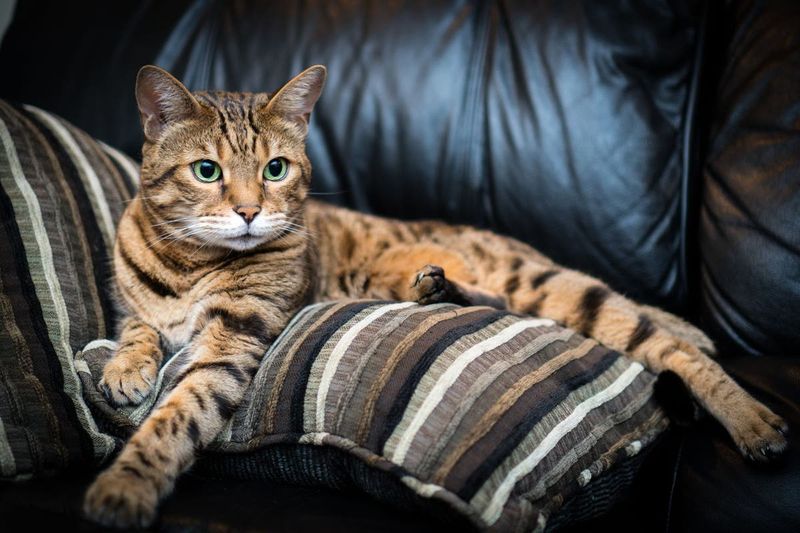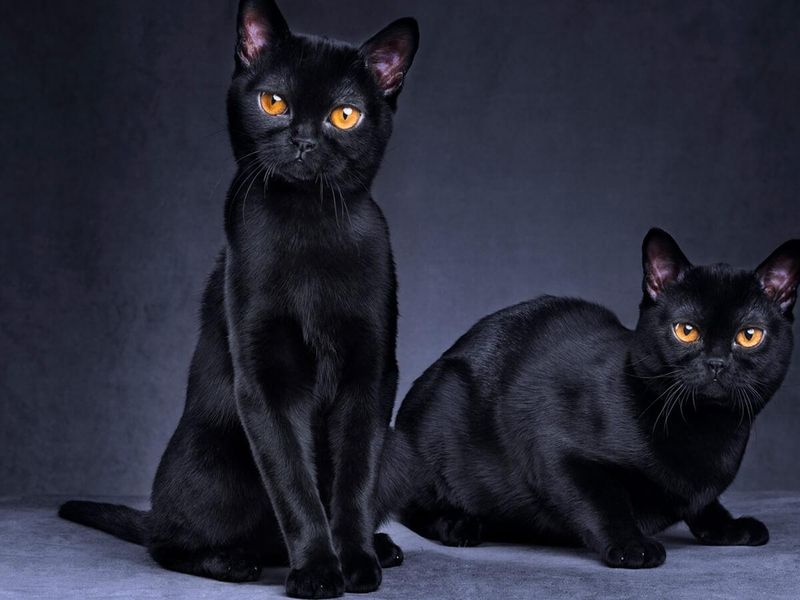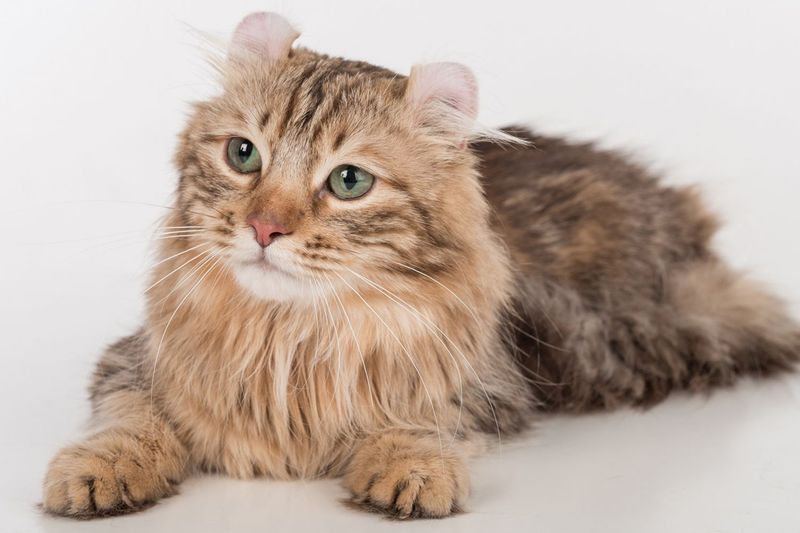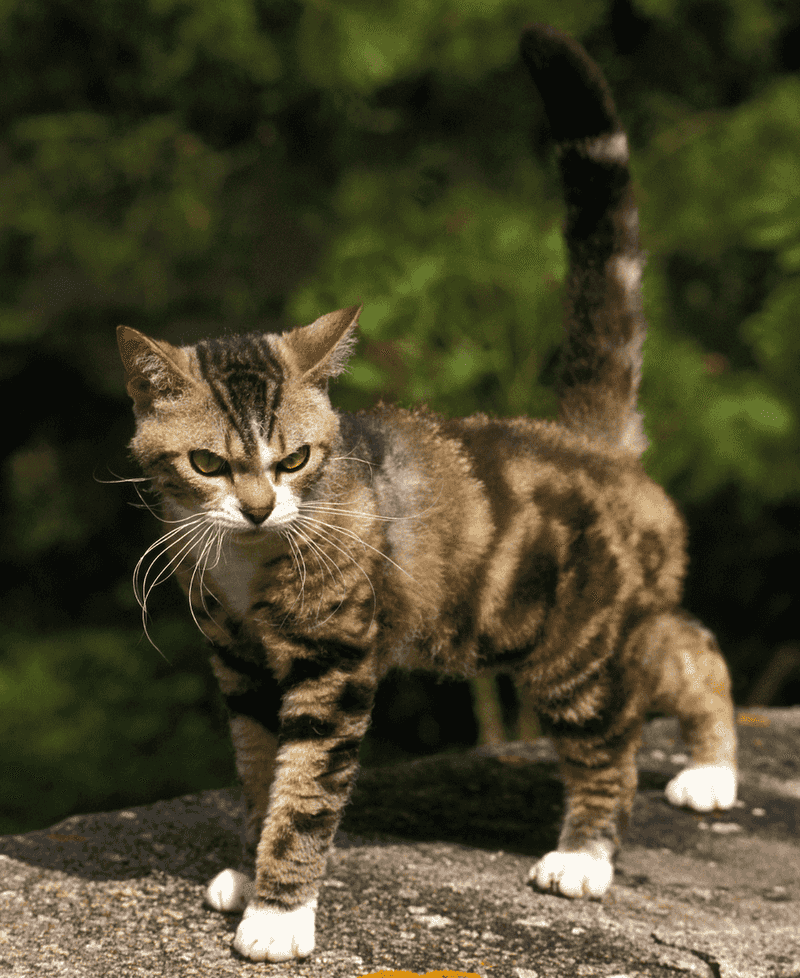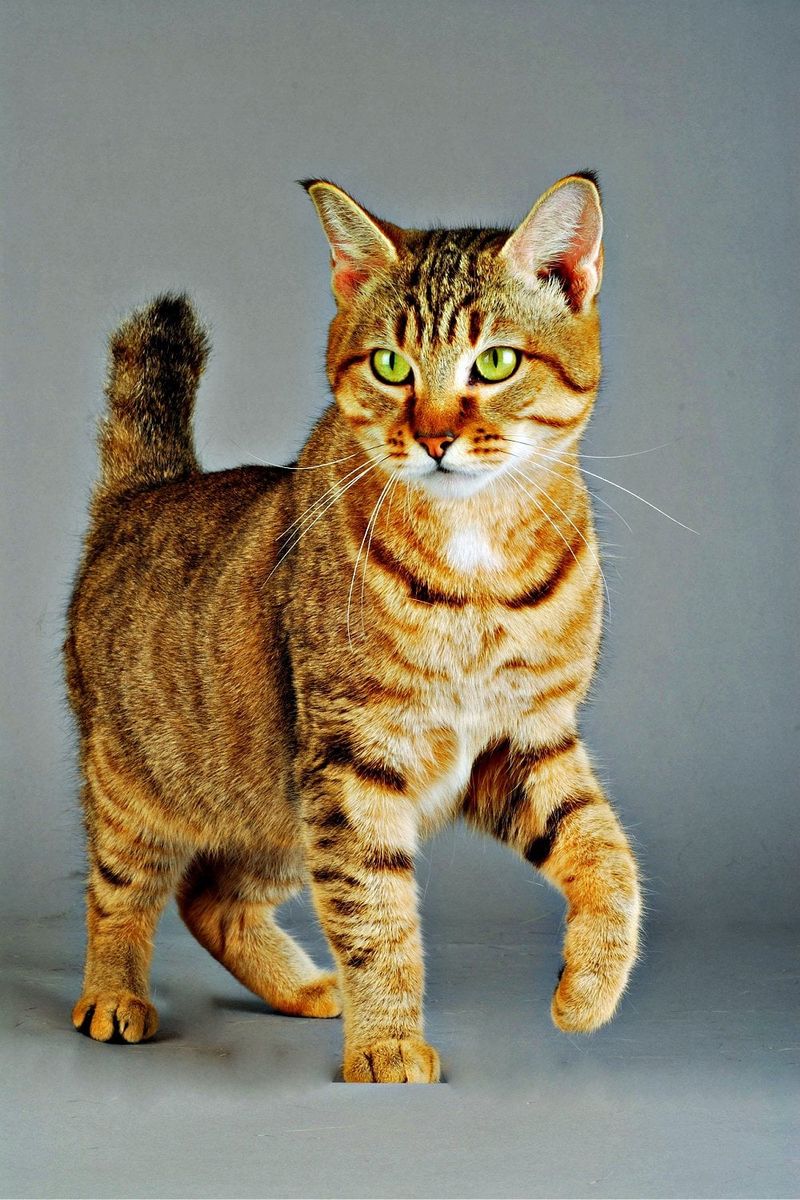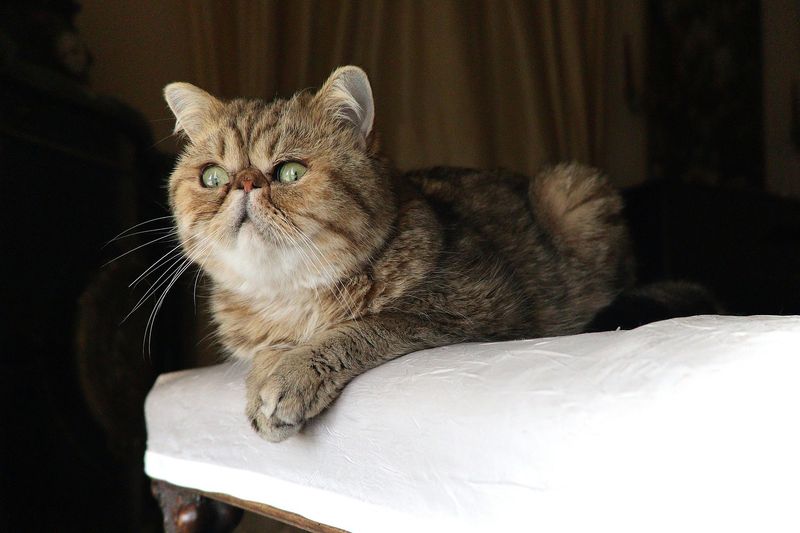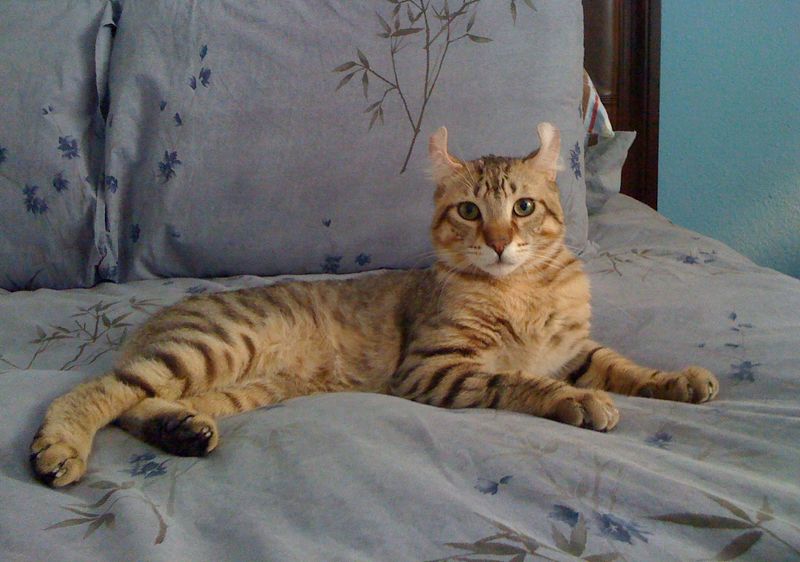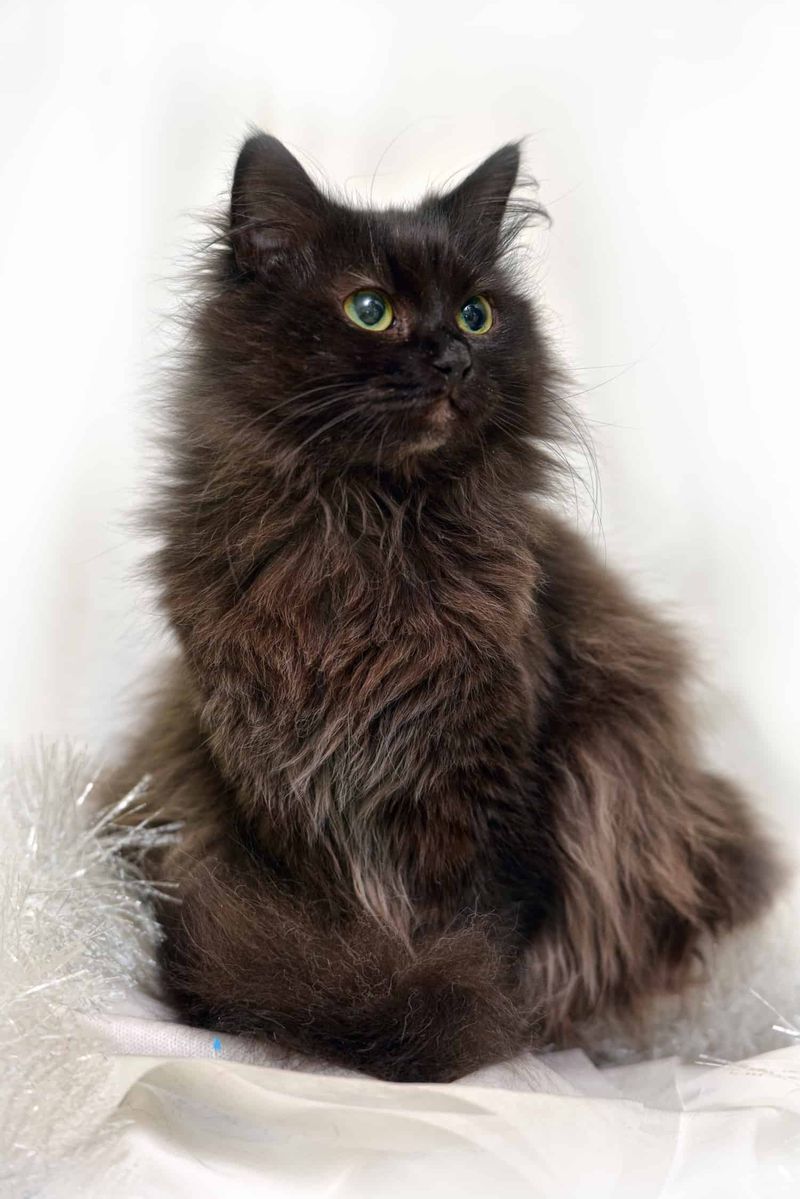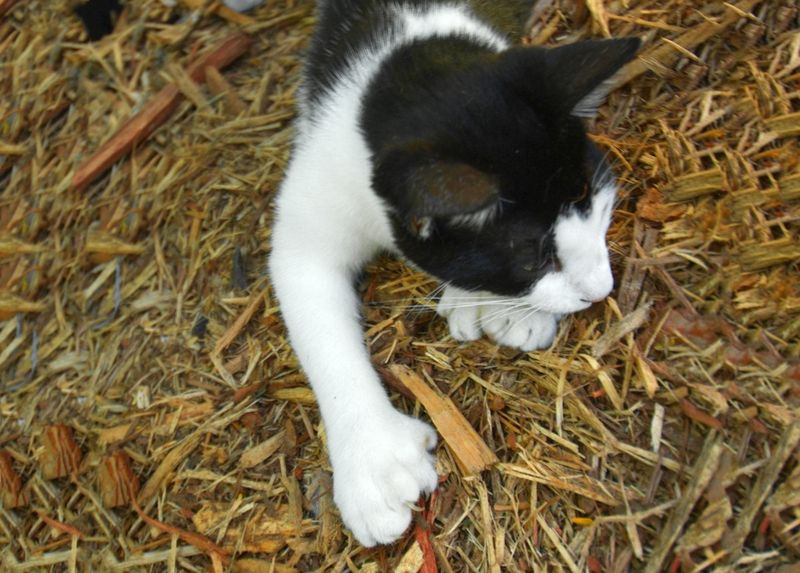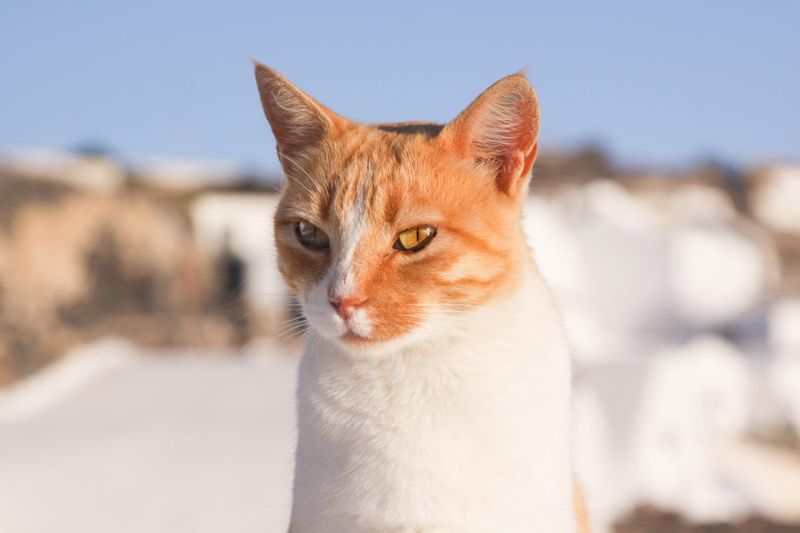📖 Table of Content:
Cats have long held a special place in American homes, evolving from barn companions to beloved family members. Over time, certain breeds began to take shape within the U.S., reflecting both regional environments and human preferences. These cats now stand as unique representatives of homegrown feline history.
Some of these breeds come with detailed, well-recorded origins that trace back through generations. Their traits, temperaments, and appearances tell stories of purpose-driven breeding and cultural influence. These cats are more than pets—they’re living symbols of American domestic life.
Others, however, are wrapped in uncertainty, with backgrounds that remain largely speculative. Despite their mysterious beginnings, they’ve become popular and admired across the country. Their origin stories may be unclear, but their charm and character are undeniable.
1. Maine Coon
Sporting tufted ears and a bushy tail, Maine Coons are the largest domesticated cat breed in America. These natural-born mousers developed in the harsh New England climate, explaining their water-resistant coats and sturdy build. Maine Coons chirp and trill rather than meow, communicating with a distinctive vocabulary that endears them to their families. Their sociable nature makes them excellent companions despite their imposing size. Local legends claim these cats resulted from matings between domestic cats and raccoons – biologically impossible but understandable given their ringed tails and forest-ready appearance.
2. Savannah
Born from crossing domestic cats with African servals, Savannahs bring wilderness into living rooms across America. Their spotted coats and elongated bodies showcase their exotic heritage, while their remarkable jumping ability leaves owners both amazed and occasionally concerned about their china collections. First developed in the 1980s, these athletic felines often display dog-like loyalty, following their owners around and even learning to walk on leashes with proper training. Savannah cats range in size depending on how many generations removed they are from their serval ancestors, with first-generation cats sometimes weighing over 20 pounds.
3. American Shorthair
Descendants of working cats that crossed the Atlantic with early European settlers, American Shorthairs earned their keep as rodent controllers on ships and in colonial homes. Their muscular bodies and sharp hunting instincts made them valuable companions in the New World. These adaptable cats come in over 80 color combinations, though silver tabbies remain the most recognizable. Selective breeding has refined their appearance while maintaining their robust health and easy-going temperament. American Shorthairs typically live 15-20 years, making them loyal family members across generations. Their moderate activity level suits various households, from apartments to farmsteads.
4. Ragdoll
Created in California during the 1960s by breeder Ann Baker, Ragdolls got their name from their tendency to go limp when picked up. These blue-eyed beauties grow to impressive sizes, with males sometimes tipping the scales at 20 pounds. Baker surrounded the breed’s development with unusual claims, including allegations of secret government experiments and alien DNA. Despite the fantastical origin stories, the breed’s popularity soared thanks to their affectionate nature and striking appearance. Ragdolls mature slowly, taking up to four years to reach full size and development. Their docile nature makes them especially suited to indoor living and families with children.
5. Bengal
Bengals resulted from crossing domestic cats with Asian leopard cats in the 1970s, thanks to conservationist Jean Mill’s breeding program. Their glittered coats feature spots or marbled patterns that shimmer in sunlight, giving them a wild appearance despite their domestic status. Active and intelligent, Bengals require mental stimulation to prevent boredom. Many enjoy water play, splashing in sinks or joining their owners in the shower – a trait inherited from their water-loving wild ancestors. The International Cat Association recognized Bengals in 1991, cementing their status as one of America’s most distinctive designer breeds. Their wild look, paired with friendly personalitie,s makes them increasingly popular pets.
6. Bombay
Created in Louisville, Kentucky during the 1950s, the Bombay was breeder Nikki Horner’s attempt to create a miniature black panther for the home. By crossing Burmese cats with black American Shorthairs, she developed a distinctively sleek, copper-eyed companion with patent-leather shine. Despite their exotic appearance, Bombays possess affectionate, people-oriented personalities. They often form strong bonds with their families and enjoy being the center of attention during gatherings. The breed’s name creates confusion since they have no connection to Bombay, India. Instead, the name was chosen purely to evoke the exotic appearance of black leopards found in that region.
7. American Curl
Discovered as a spontaneous mutation in a stray cat in California in 1981, American Curls captivate with their distinctive backward-curling ears. The unique feature results from a dominant gene that causes cartilage to harden in a curved position as kittens develop. All American Curl kittens are born with straight ears that begin curling within 48 hours. The final ear position sets permanently around four months of age, with show-quality cats displaying a 90-180 degree curve. Remarkably social and adaptable, these cats maintain kitten-like playfulness well into adulthood. Their moderate shedding and easygoing nature make them suitable for various households, including those with children or other pets.
8. American Wirehair
Emerging from a spontaneous mutation in a barn cat litter in upstate New York in 1966, American Wirehairs possess a uniquely textured coat resembling steel wool. Each hair crimps, hooks, or coils, creating a springy, resilient texture unlike any other cat breed. Genetically distinct from the similarly named but differently developed Devon and Cornish Rex breeds, American Wirehairs remain one of the rarest cat breeds worldwide. Their scarcity adds to their appeal among dedicated feline enthusiasts. Beneath their unusual coats, these cats display the same sturdy build and balanced temperament as American Shorthairs. Their farm cat heritage gives them excellent hunting instincts and adaptable personalities.
9. PixieBob
PixieBobs emerged in the Pacific Northwest during the 1980s when breeder Carol Ann Brewer developed cats resembling native bobcats. Their short tails, lynx-like facial features, and polydactyl paws (often having up to seven toes per foot) create a distinctly wild appearance. Despite persistent rumors of actual bobcat ancestry, DNA testing shows no wild genes in these domestic felines. Their muscular build and shaggy spotted coats simply evolved through selective breeding to mimic their wild counterparts. Surprisingly dog-like in behavior, many PixieBobs learn to walk on leashes, play fetch, and come when called. Their chatty nature includes chirps and chitters rather than traditional meows, adding to their unique appeal.
10. Exotic Shorthair
Developed in the 1960s by American breeders seeking a low-maintenance version of the Persian, Exotic Shorthairs combine Persian features with American Shorthair practicality. Their plush, dense coats require far less grooming than their long-haired ancestors while maintaining the same adorable squished faces. Often called “the lazy man’s Persian,” these cats offer the same sweet temperament and low activity level without the daily brushing commitment. Their round eyes and flat faces give them a perpetually surprised expression that cat lovers find irresistible. Despite their shortened muzzles, responsible breeders work to minimize breathing issues that can affect flat-faced cats. Healthy specimens enjoy moderate 12-15 year lifespans.
1. The Highlander
Relatively new to the cat fancy, Highlanders emerged in the early 2000s through experimental breeding programs combining Desert Lynx and Jungle Curl cats. Their curled ears and naturally short tails create a distinctive silhouette that draws immediate attention. Despite their established breeding program, heated debates continue about their classification and ancestry. Some registries recognize them, while others consider them experimental or refuse acknowledgment altogether. Highlanders display polydactyl tendencies, often sporting extra toes that enhance their already substantial paws. Their playful, water-loving personalities make them entertaining companions, though their energetic nature requires dedicated playtime and environmental enrichment.
2. Chantilly-Tiffany
Chocolate-colored and shrouded in confusion, Chantilly-Tiffanys have suffered identity crises throughout their development. Originally called Foreign Longhairs, then Tiffanys, then Chantillys, their name changes reflect ongoing classification struggles. These medium-to-long-haired cats nearly disappeared in the 1970s when original breeders retired. A few dedicated enthusiasts managed to locate surviving cats and restart breeding programs, though their numbers remain critically low. Historical records about their origins have been lost or contradicted over time. Some believe they descended from a chocolate-colored cat pair in New York during the 1960s, while others suggest Asian ancestry. Their semi-foreign body type and golden eyes remain distinctive despite documentation gaps.
3. The Hawaiian Poi Cat
Named after the traditional Hawaiian food poi, these cats supposedly developed on Hawaiian plantations from cats brought by European settlers. Characterized by kinked tails and distinctive coat patterns, they adapted to island life over generations. Documentation about these cats remains frustratingly sparse. Some historians question whether they constituted a true breed or simply represented local variations of mixed-breed cats with Asian influences from sailing routes. By the 1950s, interbreeding with mainland cats brought to Hawaii during military expansions diluted whatever distinct characteristics may have existed. Today, no verifiable examples remain, leaving cat historians to debate whether the Hawaiian Poi Cat ever truly existed as a distinct breed.
4. The Hemingway
Named after author Ernest Hemingway, who kept polydactyl cats at his Key West home, Hemingways aren’t officially recognized as a breed despite their distinctive trait. These six-toed cats descended from ship cats along America’s eastern seaboard, where extra toes provided better balance on rolling decks. Debate continues about whether these cats deserve classification as a distinct breed or simply represent a genetic mutation appearing in various breeds. Some breeders have attempted standardization programs focused on polydactyl Maine Coons, adding confusion to their status. The approximately 60 cats currently living at the Hemingway Home in Key West serve as living ambassadors for these unique felines, though their genetic diversity suggests mixed heritage rather than a cohesive breed.
5. The Aegean
Though traditionally considered a natural Greek breed, some evidence suggests Aegean-type cats may have developed independently in coastal New England fishing communities. Their water-resistant coats, swimming abilities, and bicolor or tricolor patterns appear in both regions, creating classification confusion. Historical records show Greek immigrants bringing cats to American fishing communities in the late 1800s. Over generations, these cats may have established populations that maintained Mediterranean characteristics despite separation from their ancestors. The mystery deepens with genetic studies showing similarities between certain New England harbor cats and those on Greek islands. Were they parallel developments or connected through maritime trade? Cat historians continue investigating this geographical puzzle.
